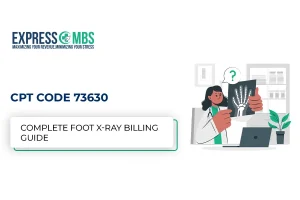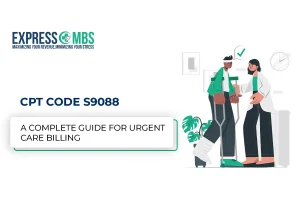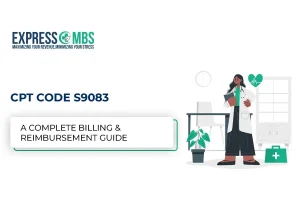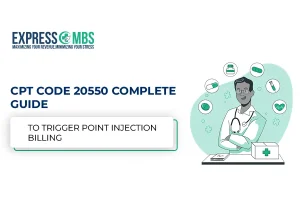
Mastering CPT Code 92499: Complete Billing & Reimbursement Guide

The 92499 CPT codes might seem like a mystery at first glance. It’s labeled as “unlisted ophthalmological service or procedure,” but in reality, it plays a vital role for providers who use cutting-edge or non-standard technology in eye care. If you’ve ever faced a denial due to this code or felt unsure about modifiers and Medicare reimbursement, you’re in the right place.
At Express Medical Billing Services, we’ve seen firsthand how practices across the country especially in places like California struggle with proper billing for unlisted codes like CPT code 92499. So, let’s clear up the confusion with real experience and industry-backed insights.
What Is CPT Code 92499?
The 92499 CPT codes are used when an ophthalmological procedure doesn’t have a designated code on the CPT list of codes. It’s a placeholder code that allows providers to bill for innovative procedures that haven’t been formally categorized yet.
In simpler terms: if your service isn’t found on the standard list, and it’s related to eye care, you use 92499.
CPT Code 92499 Description
Here’s the official 92499 CPT code description:
Unlisted ophthalmological service or procedure.
But in real practice, it means much more. Whether it’s a new imaging tool, digital pachymetry alternative, or corneal hysteresis measurement not covered under 76514 CPT code, this code gives you the flexibility to still bill for that work.
CPT Code 92499 Medicare Reimbursement
Medicare doesn’t assign a set fee to 92499. Instead, reimbursement is based on what you submit. You must:
- Show why existing codes don’t apply
- Explain the procedure in detail
- Include physician notes, reports, or technical specs
- Reference a similar procedure (e.g., 76514) for payment estimation
We recommend talking directly to your Medicare Administrative Contractor (MAC) to understand their expectations. Every region may vary, especially if you’re billing 92499 CPT codes in California, where rules are often stricter.
CPT Code 92499 Modifiers - What You Need to Know
Using the right modifiers can make or break your claim. Since 92499 CPT code is unlisted, modifiers help clarify the context. Here are the most relevant ones:
- -22: Increased Procedural Services (used when your procedure was more complex than usual)
- -52: Reduced Services (if the procedure was partially completed)
- -53: Discontinued Procedure
- -59: Distinct Procedural Service (especially useful to avoid bundling)
- -26/-TC: For splitting professional and technical components
- -GA/-GZ: Medicare-specific, related to ABN use
Pro Tip: At Expressmbs, we carefully match modifiers with documentation. It’s how we help clients prevent unnecessary delays and denials when billing CPT procedure code 92499.
92499 CPT Code Lookup - A Simple Workflow
Looking up and using 92499 properly isn’t just about searching a code. Here’s how to streamline the process:
- Check the CPT code list to ensure no current code matches your service
- Draft a clear procedure description
- Compare it to similar codes like 76514
- Assign relevant modifiers
- Include supporting documents with your claim
- Use software tools like MD Clarity’s Refine to catch underpayments
Are You Getting Underpaid for 92499 CPT Code?
Many providers using 92499 get under-reimbursed simply because the system didn’t catch it. Tools like Refine help practices track underpayments, even for unlisted codes. If you’re using 92499 regularly and suspect your rates are off, this tech can help identify gaps.
At Expressmbs, we partner with such tools to ensure every code gets paid what it’s worth.
When to Use CPT Code 92499 Instead of 76514?
Use 76514 for standard ultrasound tachymetry. But if you’re using:
- Optical tachymetry
- Corneal hysteresis technology
- Digital imaging outside of standard scope
Then 92499 CPT is likely more appropriate. Just remember: Document everything.
92499 CPT Code Fee and Reimbursement Tips
Since there’s no fixed fee, here’s what we advise:
- Submit cost comparisons (e.g., 92499 vs. 76514 fee)
- Use regional Medicare pricing
- Add any manufacturer info on devices used
- Include time, effort, and complexity in your description
Final Thoughts
Billing the 92499 CPT codes requires precision, documentation, and experience. It’s not enough to just list the procedure you have to explain it. Use modifiers wisely, lean on comparable codes like 76514, and never skip the details.
At Express Medical Billing Services, we specialize in ophthalmology billing, including the tough codes like 92499. Our team ensures you get reimbursed accurately and on time.
Need help billing 92499 or other unlisted CPT codes?
Call us at (727) 440-5903 or visit Expressmbs for a consultation today!
Frequently Asked Questions (FAQs)
CPT code 92499 is used for unlisted ophthalmological services or procedures meaning it covers eye care services that don't have a specific CPT code assigned. This might include new technology, experimental techniques, or custom services not in the standard CPT manual.
Often, yes. Because 92499 is an unlisted code, many insurance payers including Medicare may require prior authorization or detailed documentation before processing the claim. Always check with the individual payer.
Yes, modifiers are often necessary. Common ones include:
- -22 (Increased Procedural Services)
- -52 (Reduced Services)
- -59 (Distinct Procedural Service)
- -26/-TC (Professional or Technical Component)
Modifiers help clarify what exactly was done and ensure accurate billing and reimbursement.
To receive payment for CPT 92499, you must submit:
- A clear explanation of the procedure
- Supporting documentation (e.g., physician notes, reports)
- A comparison to a similar code (e.g., 76514) for reference
Payment is determined on a case-by-case basis, especially by Medicare and private insurers.
Yes, but be cautious. If billing alongside other procedures, use modifier -59 or -XU to indicate that the service is separate and distinct. Otherwise, you risk the payer bundling the codes and reducing your reimbursement.
No. CPT code 92499 doesn’t have a set fee in the Medicare Fee Schedule. Payment depends on how well you justify the procedure and how it compares to similar codes in complexity and resources used.
If denied, you can:
- Submit an appeal with added documentation
- Include an Advance Beneficiary Notice (ABN) next time, using modifier -GA
- Contact your local Medicare Administrative Contractor (MAC) for clarification



